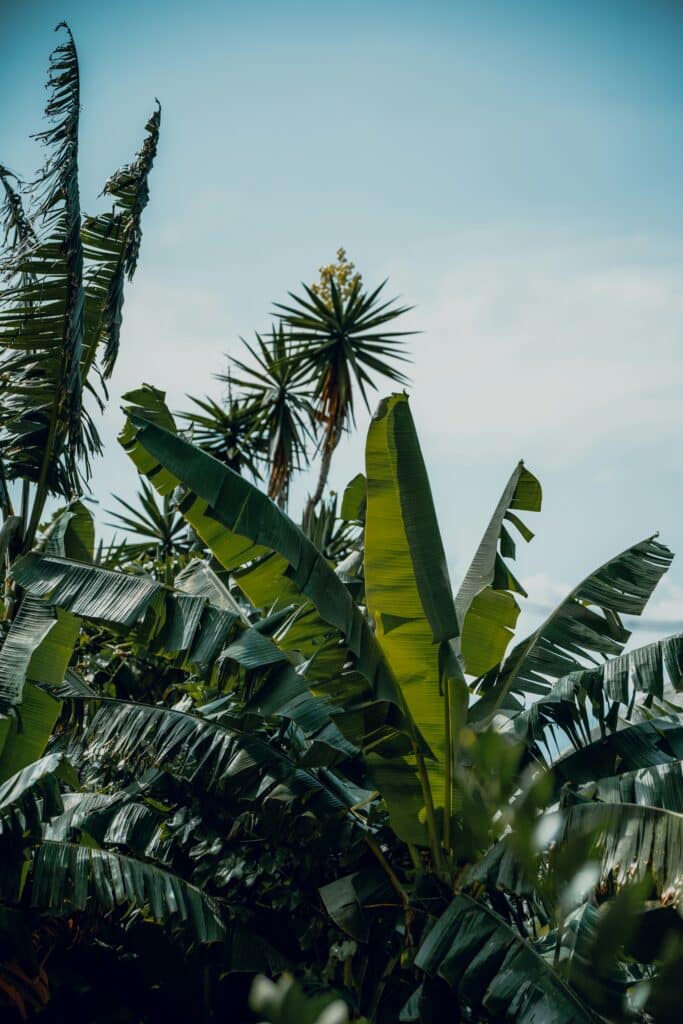Imagine standing on top of a volcano, surrounded by an awe-inspiring landscape that is both breathtaking and humbling. Costa Rica, a country known for its rich biodiversity and stunning natural wonders, is a haven for volcano enthusiasts. From the famous Arenal Volcano to the lesser-known but equally fascinating Turrialba Volcano, this ultimate guide will take you on an unforgettable journey through the diverse volcanic landscapes of Costa Rica. Whether you’re an adrenaline junkie seeking thrilling hikes or a nature lover in search of unique flora and fauna, this guide will provide you with all the essential information to make your volcano exploration in Costa Rica an unforgettable experience.
Understanding Volcanic Activity in Costa Rica
Costa Rica, located in Central America, is a country known for its stunning natural beauty and unique biodiversity. One of the key natural attractions that draw tourists from around the world is its volcanic activity. To fully appreciate and explore Costa Rica’s volcanos, it is essential to understand some basic principles of volcanology.

Basic Volcanic Principles
Volcanoes are formed when molten rock, called magma, rises to the Earth’s surface. Costa Rica is situated on the Pacific Ring of Fire, a volcanic belt encircling the Pacific Ocean that experiences frequent volcanic eruptions and seismic activity. This geological feature is responsible for the high concentration of volcanoes in Costa Rica.
Volcanoes can be classified into different types based on their eruption style and the type of lava they produce. Understanding these classifications can help you appreciate the unique characteristics of each volcano you explore in Costa Rica.
Costa Rica’s Geographic Location on the Pacific Ring of Fire
Costa Rica’s strategic location on the Pacific Ring of Fire makes it a focal point for volcanic activity. The country is located at the intersection of two tectonic plates, the Cocos plate and the Caribbean plate. The subduction of the Cocos plate beneath the Caribbean plate creates the ideal conditions for volcanic activity in Costa Rica.
This geological phenomenon has resulted in more than 200 volcanic formations across the country, including both dormant and active volcanoes. The prevalence of volcanic activity has influenced the country’s landscape, culture, and even its economy.
Local History of Volcanic Eruptions
Costa Rica has a long history of volcanic eruptions, with some volcanoes having major eruptions as recently as the 21st century. One of the most notable eruptions in recent history occurred in 1968 when the Arenal Volcano erupted after being dormant for nearly 500 years. This eruption marked the beginning of an active phase for Arenal, which lasted until 2010.
Other volcanoes such as the Poas and Irazu have also experienced significant eruptions in the past. These eruptions have shaped the landscape of Costa Rica and continue to contribute to the rich volcanic soil that supports the country’s lush flora and fauna.
Popular Volcanos for Exploration
Poas Volcano
One of the most visited volcanoes in Costa Rica is Poas Volcano, located in the Poas Volcano National Park. Known for its stunning crater lake and frequent volcanic activity, Poas offers visitors a unique opportunity to witness the power of nature. The hike to the summit of Poas is relatively easy, making it accessible for beginners and families.
Irazu Volcano
Situated in the Irazu Volcano National Park, the Irazu Volcano is one of the highest active volcanoes in Costa Rica. It offers breathtaking panoramic views of the surrounding landscape, including the Caribbean Sea and the Pacific Ocean on clear days. Hiking trails allow visitors to explore the various craters and the strikingly colorful mineral-rich lake within the main crater.
Arenal Volcano
The Arenal Volcano is perhaps the most famous volcano in Costa Rica. Its perfectly symmetrical cone and regular eruptions made it a major tourist attraction for many years. Although the volcano is currently in a resting phase, the surrounding Arenal Volcano National Park offers visitors a range of activities, including hot springs, zip-lining, and hiking trails through lush rainforests.
Rincon de la Vieja Volcano
Rincon de la Vieja is an active volcano located in the northwestern part of Costa Rica. It is part of the Rincon de la Vieja National Park, which encompasses not only the volcano but also a diverse range of ecosystems, including hot springs, waterfalls, and savannahs. The park offers visitors a chance to witness unique geothermal activity up close and explore the volcanic landscape through various trails.
Required Skills and Safety Measures for Volcano Exploration
Exploring volcanoes can be an exhilarating and awe-inspiring experience, but it is essential to be adequately prepared to ensure your safety and the safety of others. Here are some necessary skills and safety measures to consider before embarking on your volcano exploration adventure in Costa Rica.
Basic Hiking and Navigation Skills
Many volcano hikes in Costa Rica involve moderate to challenging terrain, so having basic hiking skills and the ability to navigate using a map and compass is crucial. It is also essential to have a good understanding of trail markers and signs to prevent getting lost or straying off the designated paths.
Appropriate Gear and Clothing
When exploring volcanoes, it is essential to dress appropriately to protect yourself from the elements. Wearing sturdy hiking boots or shoes will provide you with the necessary traction and ankle support. It is also crucial to have a lightweight backpack to carry essentials such as water, snacks, sunscreen, and an extra layer of clothing. Additionally, wearing moisture-wicking and breathable clothing will help keep you comfortable during your hike.
Understanding Volcanic Hazards
While volcanoes are captivating, they also pose certain risks. It is important to familiarize yourself with the potential hazards associated with volcanic activity, such as ashfall, toxic gases, and landslides. It is advisable to check with local authorities or park rangers for updated information about the current volcanic conditions and any safety restrictions in place before heading out on your adventure.
First Aid Basics for Outdoor Expeditions
In any outdoor excursion, having basic first aid knowledge is essential. Familiarize yourself with common injuries that can occur while hiking, such as sprains, blisters, and insect bites. Pack a well-stocked first aid kit and know how to use its contents effectively. It is also advisable to carry a map with marked emergency access points and inform someone about your planned route and expected return time.
Organized Volcano Tours
While independent exploration can be rewarding, joining organized volcano tours in Costa Rica offers several benefits. Here are some reasons why guided tours can enhance your volcano exploration experience.
Benefits of Guided Tours
One of the significant advantages of joining a guided tour is the expertise and knowledge of the tour guides. They are well-versed in the volcanic history, geology, and flora and fauna of the area, enriching your understanding of the volcanic landscape. Additionally, guided tours often include transportation, meals, and accommodations, providing a hassle-free experience.

Recommended Tour Operators
In Costa Rica, there are numerous reputable tour operators offering volcano exploration tours. Some recommended operators include [Tour Operator A], [Tour Operator B], and [Tour Operator C]. It is advisable to research different operators, read customer reviews, and compare itineraries to find the one that best suits your preferences and budget.
Typical Tour Itinerary and Cost
The exact itinerary and cost of volcano exploration tours will vary depending on the tour operator and the specific volcanoes included. However, a typical tour may include visits to popular volcanoes such as Poas, Irazu, Arenal, and Rincon de la Vieja.
The tour itinerary may also include additional activities such as hiking through national parks, relaxing in hot springs, and exploring nearby waterfalls. The cost of the tours will depend on the duration, inclusions, and level of comfort desired. It is advisable to book your tour well in advance to secure your spot and ensure availability.
Independent Volcano Exploration
For those who prefer the freedom and flexibility of independent exploration, Costa Rica offers opportunities to plan your volcano adventure. Here are some essential considerations for independent volcano exploration.
Obtaining Necessary Permits
Before embarking on an independent volcano exploration, it is essential to check if any permits are required. Some volcanoes, particularly those located within national parks, may require visitors to obtain permits or pay entrance fees. Check the official website of the respective national park or consult with local authorities to ensure compliance and avoid any unnecessary complications.
Planning Your Route
Planning your route is crucial to ensure a smooth and successful volcano exploration. Research the available hiking trails, their difficulty levels, and estimated durations. Consider the weather conditions during your visit and plan accordingly. It is also advisable to inform someone about your planned route and expected return time for safety purposes.
Pack List Essentials for Independent Exploration
When venturing out independently, it is important to equip yourself with essential items to ensure your safety and comfort. Pack items such as a map, compass, GPS device, headlamp, sufficient water, snacks, sunscreen, insect repellent, a whistle, a multi-tool, and a first aid kit. Additionally, wearing appropriate clothing and footwear and carrying layers for changing weather conditions is crucial.
Accommodation Near the Volcanos
To fully immerse yourself in the volcano exploration experience, staying near the volcanoes allows for convenient access and the chance to witness the landscapes at different times of the day. Here are some accommodation options to consider.
Lodging within National Park Boundaries
Several volcanoes in Costa Rica offer lodging options within the national parks. These accommodations provide visitors with the unique opportunity to wake up to the sights and sounds of the volcanoes. However, availability may be limited, so it is advisable to book well in advance.

Recommended Hotels and Campgrounds
For those seeking a wider range of accommodation options, there are various hotels and campgrounds located near the volcanoes. Some recommended hotels include [Hotel A], [Hotel B], and [Hotel C]. These establishments offer comfortable lodging, proximity to the volcanoes, and often provide additional amenities such as restaurants, swimming pools, and guided tours.
Campgrounds are another excellent option for nature enthusiasts looking to connect with the outdoors. Many campgrounds near the volcanoes offer basic facilities such as restrooms and cooking areas. However, it is important to ensure that camping is permitted in the area and to follow Leave No Trace principles to minimize your impact on the environment.
Staying with Local Families
For a truly authentic and immersive experience, consider staying with local families near the volcanoes. This option allows you to learn about the local culture and traditions firsthand while supporting the local economy. There are various homestay programs available, offering visitors an opportunity to forge meaningful connections with the local communities.
Local Flora and Fauna around the Volcanos
Costa Rica’s volcanic landscapes are not only visually stunning but also support a rich variety of flora and fauna. Exploring these ecosystems is a must for nature enthusiasts. Here’s a glimpse into the unique plant and animal life around the volcanoes.
Unique Plant Life around Volcanoes
Volcanic soil is known for its fertility, creating favorable conditions for lush plant growth. Costa Rica’s volcanoes are home to diverse plant species, from tropical rainforest species to high-altitude cloud forest species. Witness towering trees, colorful orchids, and vibrant ferns as you hike through the volcanic landscapes.
Animal Species Adapted to Volcanic Landscapes
Costa Rica’s volcanic regions offer a habitat for a wide range of animal species that have adapted to these unique environments. Look out for iconic species such as the resplendent quetzal, the three-wattled bellbird, and the emerald toucanet. Monkeys, sloths, and jaguars may also be spotted in the surrounding forests, adding to the sense of adventure and exploration.
Birdwatching Opportunities
Costa Rica is renowned for its incredible birdwatching opportunities, and the volcanic regions are no exception. The combination of diverse ecosystems and abundant food sources attracts a multitude of bird species. Grab your binoculars and keep an eye out for toucans, hummingbirds, trogons, and many other colorful and fascinating bird species.
Local Communities and Volcanos
Volcanoes hold a significant place in the hearts and lives of the local communities in Costa Rica. Here’s a glimpse into the fascinating relationship between the people and the volcanoes.
How Local Communities Coexist with Volcanos
Despite the inherent risks associated with living in close proximity to active volcanoes, local communities in Costa Rica have adapted and coexist harmoniously with these natural wonders. They have a deep respect for the power of the volcanoes and have developed strategies to mitigate volcanic hazards. By understanding their coexistence, visitors can appreciate the resilience and wisdom of these communities.
Volcanos in Local Myths and Folklore
Volcanoes have always held a special place in the folklore and mythology of Costa Rica. Ancient indigenous cultures associated the volcanoes with gods and spirits, resulting in captivating mythological tales passed down through generations. Exploring these myths and legends adds a layer of mystique to your volcano exploration experience.
Influence of Volcanos on Local Economy
The volcanic landscapes of Costa Rica not only contribute to its natural beauty but also play a significant role in the local economy. Volcano tourism has become a major source of income for communities surrounding the volcanoes. It has created employment opportunities, promoted sustainable development, and facilitated investments in infrastructure and conservation initiatives.
Volcano Photography Tips
Capturing the mesmerizing beauty of the volcanoes in Costa Rica is an unforgettable experience. Here are some handy tips to help you take stunning photographs during your volcano exploration.
Sunrise and Sunset Photography
The soft, warm light during sunrise and sunset enhances the dramatic impact of volcano landscapes. Plan your hikes accordingly so that you reach viewpoints during the golden hours. Experiment with various compositions and exposure settings to capture the vibrant colors and the interplay of light and shadow.
Capturing Volcanic Features
Volcanoes offer a wealth of photographic opportunities beyond the sweeping landscapes. Zoom in on the intricate details of the volcanic craters, lava formations, and hot springs. Play with different angles, perspectives, and focal lengths to add depth and interest to your photographs.
Best Spots for Panoramic Views
Costa Rica’s volcanoes offer breathtaking panoramic views that are perfect for capturing the vastness of the landscapes. Look for vantage points along the hiking trails or viewpoints recommended by park rangers. Utilize panorama features on your camera or smartphone to capture the grandeur of the volcanic scenery.
Conservation and Sustainable Volcano Exploration
As responsible travelers, it is crucial to be mindful of our impact on the environments we visit. Here are some ways to ensure conservation and sustainable practices during volcano exploration in Costa Rica.
Impact of Tourism on Volcanic Landscapes
The popularity of volcano exploration has increased tourism in Costa Rica’s volcanic regions, which can have both positive and negative impacts. Heavy foot traffic and improper waste disposal can lead to erosion and degradation of these fragile ecosystems. It is essential to practice Leave No Trace principles and follow any guidelines provided by park authorities to minimize our impact on these delicate landscapes.
Leave No Trace Principles
Leave No Trace principles are essential guidelines for responsible outdoor experiences. When exploring volcanoes, remember to dispose of waste properly, respect wildlife and their habitats, stay on designated trails, and minimize campfire impacts. By adhering to these principles, we can help preserve the natural beauty of Costa Rica’s volcanic areas for future generations.
How to Support Local Conservation Efforts
Supporting local conservation efforts is vital for the long-term sustainability of volcano exploration in Costa Rica. Consider donating to local organizations focused on environmental conservation, participating in volunteer programs, or choosing accommodations and tour operators that have a strong commitment to sustainability practices. By supporting these initiatives, we can contribute to the preservation of the unique volcanic landscapes and the surrounding ecosystems.
In conclusion, volcano exploration in Costa Rica offers a myriad of opportunities to experience the raw power and beauty of nature. Whether you choose to join organized volcano tours or venture out independently, the stunning landscapes, unique flora and fauna, and the rich cultural heritage will leave an indelible mark on your journey. By understanding and respecting the volcanic activity, practicing responsible tourism, and supporting local conservation efforts, we can ensure that future generations can also enjoy the remarkable volcanic wonders of Costa Rica.








0 Comments